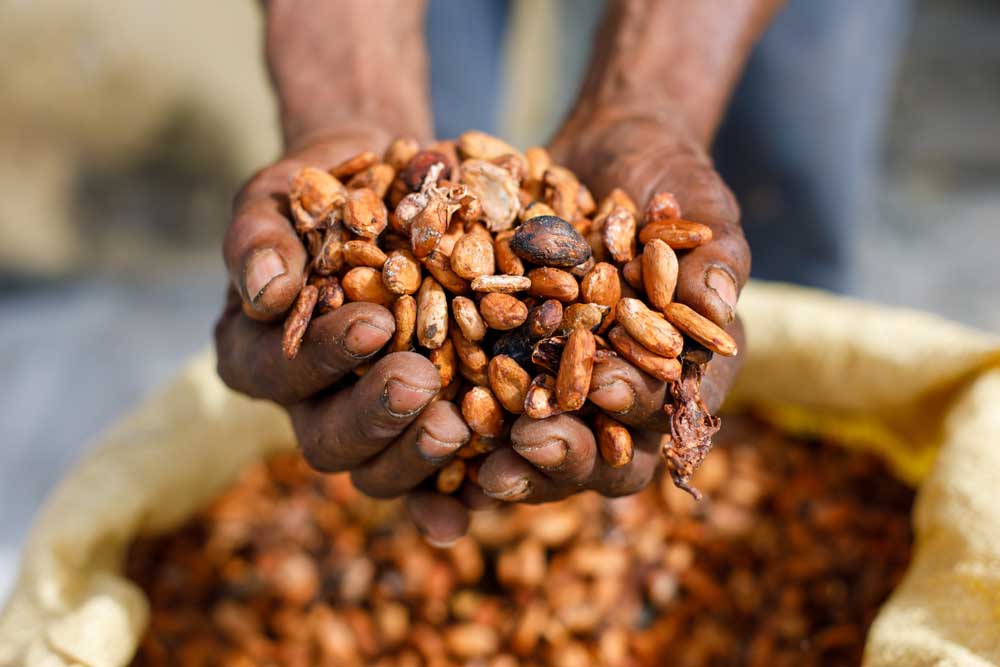Roald Dahl famously said, ‘Never mind about 1066 William the Conqueror, 1087 William the Second. Such things are not going to affect one’s life ... but 1932 the Mars Bar and 1936 Maltesers and 1937 the Kit Kat - these dates are milestones in history and should be seared into the memory of every child in the country.’
It’s true that chocolate is perhaps the most universally loved food, not just among adults but also among kids. A world without chocolate today is unthinkable – imagine not being able to sip a warm cup of cocoa or a dig into a decadent dark chocolate cake ever again.
Sadly, the chocolate industry is facing a crisis – an astronomical rise in cocoa prices. The reason? A shortage in cocoa.
The main ingredient that contributes to its flavour is cocoa bean. The International Cocoa Organization has estimated a global production deficit of this crop at a whopping 462,000 tonnes this year. This is a decline of nearly 11 per cent. In fact, as recently as March 2024, prices reached an all-time high, with each metric tonne costing $10,000 – that’s a 136 per cent surge from mid-2022.
‘Roughly 70 – 80 per cent of the world’s cocoa supply comes from Western Africa,’ says Hyderabad-based home baker Srinidhi Shetty, who has been struggling to keep her prices the same, while factoring in the increased cost of cocoa. ‘This includes regions like Ghana and Ivory Coast, which give us some of the best cocoa bean. The cocoa crop hasn’t had a good run at all, mainly because of climate change. There has been severe drought in the region last year, leading to crop failure and shortfall. Also, cocoa plantations are mainly run by smaller farmers with limited investment. All of this put together, doesn’t bode well.’
She adds, ‘Larger manufacturers and players in the F&B and hospitality industry can offset the price rise with other products, and a lot of them can afford to play the waiting game until prices stabilise. However, this is not the case with smaller players. If you want to provide quality cocoa to your consumers, it’s expensive. We import brands such as Valrhona or Callebaut, and the prices have shot up. There are a lot of establishments that have resorted to using flavours and essences in their cakes and other products to compensate. It isn’t ideal, but what can one do? Some manufacturers and bakers are using the ‘shrinkflation’ technique – keeping prices standard but reducing portion size, and others use ‘fillers’ such as fruits or jellies or other ingredients in place of chocolate. However, there’s no denying that pure chocolate is still the most popular ingredient around. For us to have clarity and create a steady product vs price system will take time, as we have to wait for all the other parameters to settle.’

Cocoa is a high-value crop, but the farmer receives a lower share of the profit. As a result, there is very little replanting to offset growing demand, existing cocoa trees are ageing, and farmers are switching to other profitable crops such as rubber. The African Development Bank states that women account for 70 per cent of agricultural labour on Ivory Coast cacao farms but receive only 20 per cent of the profit. What’s more, they own only 25 per cent of the farms.
None of this concerns the end consumer though, and the demand for chocolate still rages. According to the Indian Chocolate Market Report 2024-32 which was published by the International Market Analysis Research and Consulting Group (IMARC Group), India’s chocolate market reached US$ 2.6 billion in 2023. This number is expected to grow to US$ 5.3 billion by 2032, at a CAGR of 7.7 per cent.
However, there could be a silver lining – the small, untapped market of Indian farmers who can fill the gap. India produces nearly 27,000 tonnes of cocoa annually, and the major contributors are the southern states. India is one of the top 20 cocoa producing nations in the world, and while the supply is small, it is consistent. ‘We have a small cocoa plantation at Pollachi in Tamil Nadu,’ says A Ilavazhasi. Along with her husband, Ilavazhasi is part of the bean-to-bar movement, supplying cocoa beans to homegrown Indian chocolate brands. ‘The crop needs specific weather conditions, which we offer. It is closer to the equator, and has higher humidity levels and adequate rainfall. Many local chocolatiers and bakers have come to rely on us for our crops. We use ethical farming methods with reduced pesticides and also employ a lot of women, paying them fair wage, which is a draw for brands that are aligned towards our values.’
As consumers, we can make conscious choices to support sustainable cocoa farming. We must also ask for transparency and accountability in the value chain, promoting fair trade between companies and cocoa farmers. This will ensure better value for everyone in the long run. After all, we don’t want to run out of chocolate, do we?